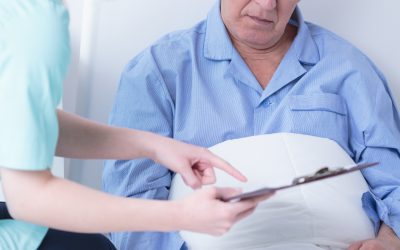Spinal Stenosis is a condition caused by the narrowing of the spinal canal and currently has no known cure. This condition may occur for many reasons and is common in adults over the age of 50. Some people are born with a narrower spinal canal, which makes them more susceptible to developing spinal stenosis later on in life. Others develop this condition because of a herniated disc, poor posture, thickening ligaments around the vertebrae, or any previous injury to the spine.

Spinal Stenosis is most frequently seen in patients who have previously suffered from osteoarthritis, or arthritis of the spine. Osteoarthritis enables small bone growths called osteophytes, which forcefully cause the spinal canal to close in on the spinal nerve roots, causing extreme pain, otherwise known as spinal stenosis.
Although not yet curable, this condition is treatable through various exercises and non-surgical techniques, such as:
1.Spinal Adjustments
In an analysis of six case reports on chiropractic treatment of spinal stenosis, chiropractors use various spinal manipulation techniques to minimize their patients’ symptoms.
One of the chiropractors highlighted in the report treats his 76-year-old patient using flexion-distraction manipulation, a technique that seeks to increase spinal motion and resolve disc-bulges.
Flexion-distraction and similar chiropractic exercises are enacted to combat the patient’s loss of motion due to their spinal condition. In a follow-up, after only 12 visits for spinal manipulation treatment, the patient showed improvement in his range of motion. The effects of spinal stenosis are not necessarily permanent, but it takes time and effort to improve the condition.
2.Decompression therapy
Decompression therapy helps with herniated discs and other related issues by gently stretching the spine. Positive results normally occur after around 15 visits to a chiropractor who helps to extend and retract the spine to create pressure. This pressure allows for several beneficial nutrients to pass through the canal into the discs, enabling them to heal.

Spinal Decompression Therapy is a non-surgical process in which the chiropractor has the patient lie on his back atop a motorized table. The patient is wearing a harness around his hips, which is attached to the bottom half of the table by his feet. The lower part of the table begins to shift back and forth, creating a decompression movement, fully extending the spine, and then returning it to a relaxed position.
This process enables a healing fluid to enter the damaged discs, effectively nursing them back to health. This process does not entirely cure patients of spinal stenosis, but the treatment alleviates pain and improves the health of the patient.
3.Traction Methods
Chiropractic traction is a common method of treatment used on patients with spinal and skeletal pain. Health professionals can manually create traction to alleviate the pain by using specifically designed machines, some of which can be used at home.
The most common of these at-home machines uses a pulley system and hangs over a door. This system requires the user to perform the exercise twice a day for about five minutes each time.
Lumbar spinal stenosis (affecting the back) and cervical spinal stenosis (the neck) can be treated by lying on your back or sitting, depending on which area you are experiencing the highest pain and pressure. Your chiropractor will have you use small amounts of weight to distract the pressure being exerted on the neck, for example, manually creating traction in the problem area.
If you want to receive the best possible treatment for your symptoms, visit your chiropractor for an assessment. Your chiropractor will make sure you receive personalized care tailored specifically to the pain you are experiencing. Rehabilitation starts with consulting a professional, so contact your chiropractor to schedule an appointment.



